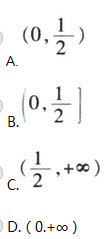Mary can’t understand such sentences as “She is blue today.” “You are yellow.” “He has a green thumb (大拇指).” “He tells a white lie.” and so on. And she goes to her teacher for help.
Mary: Mrs. Smith, there is a colour in each of these sentence. What do they mean?
Mrs. Smith: In everyday English, blue sometimes means sad. Yellow, afraid. A person with a green thumb grows plants well. And a white lie is not a bad one.
Mary: Would you please give me an example of a white lie?
Mrs. Smith: Certainly. Now I give you some cake. In fact, you don’t like it. But you won’t say it. Instead, you say, “ No, thanks. I’m not hungry.” That’s a white lie.
Mary: Oh, I see. Thank you very much.
小题1: Blue sometimes means sad in ________ English.
A.good
B.spoken
C.dirty
D.poor小题2:I don’t have a green thumb, so all my plants _________.
A.die off
B.grow well
C.look nice
D.are good小题3:He is yellow. Tom is ______ to climb the tree.
A.happy
B.clever
C.glad
D.afraid小题4:He is ______ today. It means his father is ill.
A.blue
B.yellow
C.green
D.white
小题1:B
小题2:A
小题3:D
小题4:A
题目分析:这篇短文主要介绍了Mary对几个带有颜色的句子的不理解,于是她去问Mrs. Smith,然后她在老师的帮助下,理解了它们的含义。
小题1:细节理解题。根据In everyday English, blue sometimes means sad. 在口语中,蓝色意味着难过。可知选B。
小题2:细节理解题。根据A person with a green thumb grows plants well.带有绿色拇指的人植物种得好。故选A。
小题3:细节理解题。根据Yellow, afraid. 黄色,害怕。故选D。
小题4:细节理解题。根据blue sometimes means sad.蓝色有时意味着难过。故选A。

 ,则a的取值范围是()。
,则a的取值范围是()。